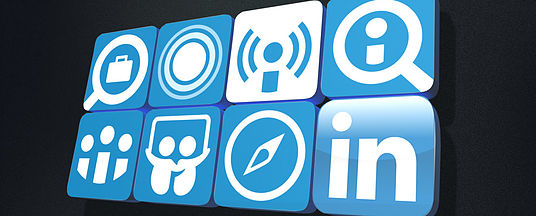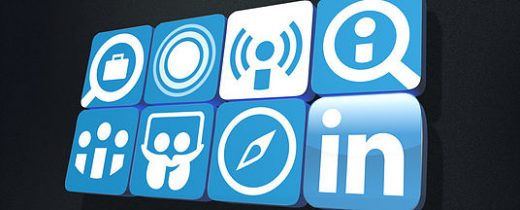18 Tips for Creating a Well-Optimized LinkedIn Account
June 12, 2016
LinkedIn is the world’s largest professional network with over 400 million members in over 200 countries and territories across the globe. It was created to connect the world’s professionals by providing them with the opportunity to make meaningful connections and find career opportunities. LinkedIn has something for every user whether you are a business owner, recruiter, job seeker, freelancer or student. When you join LinkedIn, you get access to people, jobs, news, updates, and insights that help you be great at what you do and maintain connections. Here are some tips to help you to optimize your LinkedIn account.
Creating a profile: Your profile gives LinkedIn viewers a look at who you are and what you have accomplished. Use your LinkedIn account to establish your professional brand. It’s important to have an attractive and functional profile. Your profile will have your name, headline, experience, industry, location, education and picture to start.
Headline: A headline should provide a professional representation of you and your areas of expertise. This headline or tagline will be the first impression that you present besides your name and photo. A great headline may present your current title and company, as well as your area of expertise while using keywords that will be easily accessible to searchers. This is the section in which you are able to establish your brand and tell the viewer what they should expect to see in your profile. Don’t feel obligated to only list your current job title or education in your headline. LinkedIn has enabled the headline to contain up to 120 characters. Allow your passions to be communicated in your headline. If you are pursing a position or level of education, you could use a headline like ‘Aspiring Business Writer’ or ‘Future Business Leader’.
Photo: You absolutely must have a professional photo on your profile! According to LinkedIn, profiles with a professional photo are 14 times more likely to be viewed by recruiters, which can lead to more connections and increased visibility in your industry. Choose a photo in which you are clearly seen in and either wearing professional or job-related attire. Profiles without photos, may reflect poorly as they seem like fake accounts. Profiles with inappropriate photos give a negative impression to their viewers.
Contact Info: Enter an email that is dedicated specifically to business, that is appropriately named. Connect your account to Twitter or Facebook if you see fit. I would recommend only linking it if you have a professional presence on Twitter and Facebook. This feature can be found in settings. You can also post a link to an independent website. Only post your cell phone number if you are interested in taking calls.
Custom URL: LinkedIn allows you to create a custom URL. It is likely a good idea to customize your URL so that it is easily shareable. A customized URL is highly preferred by most LinkedIn users because it is more professional in appearance and it provides you with the opportunity to post the link in your email signature, business card, social profiles and other websites. Example: www.LinkedIn.com/in/acbelton

Profile Summary: Your summary is the section in which you get to tell viewers about yourself. I have seen many accounts with and without summaries, but in order to have an optimized and professional account it is highly recommended to include a summary. LinkedIn has stated that the inclusion of a summary will likely draw more viewers to your account. A summary will also help to optimize your accounts as it can increase the keywords in the account which can draw more views from recruiters and potential prospects. It does not have to be lengthy and complicated. It is often better to create a small and simple summary that briefly informs your audience about yourself and your use of LinkedIn. Listing experiences, posting pictures or documents (resume, work sample, link to a website), famous quotes, and goals on LinkedIn are excellent items to include in your summary. In addition, if you are looking to have people contact you, add your contact information in your summary. Typical contact information would be an email address and link to your website.
Education: This section allows you to add the institutions you attended, programs of study, grade point average, dates attended, honors and awards, diploma earned, and a summary of your time at the school. Write a small summary of your time at the school, highlighting the positive aspects. This is extremely important for college students and interns. LinkedIn also allows you to enter the courses that you have taken at each institution and each job. You can enter the title of course and course code. LinkedIn has continued to work to improve this section and is helping young people to network. In addition, LinkedIn has added a University Finder, Field of Study Explorer and University Rankings catered specifically to students.

Experience: LinkedIn can essentially serve as a virtual resume or lead generation tool. In this section, you are able to elaborate and mention far more information than you could in a simple resume. It is important to fill in all of the fields as this will help to provide an extensive look into your work history, which will likely provide you with more opportunity. Fill in your position, company, dates of employment, location and a summary of responsibilities. It is also suggested to add some background information about the company. For business owners and freelancers, a complete and well-written account can help you to build credibility and be found by clients seeking your services. A well-written account will also help job seekers and students to be found as they search LinkedIn for credible professionals with ‘social proof’ of experience and competencies. Since many LinkedIn account are either poorly written or barely completed, recruiters will be impressed to see an account that is complete and written objectively.
Volunteer & Causes: This section is similar to experience, but is solely purposed to show what volunteer work you have done. You can also list the causes that you support. Many recruiters consider applicants with volunteer experience so LinkedIn encourages its members to fill out that section.

Organizations/Certifications: LinkedIn allows you to list the organizations and certifications that you have been a part of or are currently involved with. In organizations relevant to your position or future goals. Any certifications mentioned will be helpful and could potentially increase your profile views.
Languages: List any languages that you know. LinkedIn has an option where you can list a language at the level that you know it by. For example, I have listed Spanish at elementary proficiency since I know and can understand some Spanish, as I attended 3 years worth of Spanish classes during high school.
ProFinder for Freelancers: LinkedIn has recently launched its new ProFinder service that is modeled after popular freelancer for hire sites such as Fiverr and Upwork. ProFinder matches customers looking for a specific type of product or service with a qualified professional. Because of its vast user data, LinkedIn is able to quickly and easily show you the best prospects for a freelance project or ongoing service that you need based on keywords, categories, or search terms. LinkedIn can even filter search results based on your network (who you’re already connected to at a first- or second-degree level), recommendations those professionals have, their physical location (if it is relevant) and more.
Connections: The purpose of LinkedIn is to link professionals and promote communication. So who would you want to connect with? You should connect with everyone that you know who has a LinkedIn profile. Keep in mind that the more connections you have, the more users you will be able to access. Connect with friends, family members, past and present co-workers (associates, management, people that you interact with at work) acquaintances, business partners and alumni. You can do this by obtaining email addresses or searching for the people you may know. It is highly recommended for college students to connect with classmates so that they are able to see how they found a job and can provide a reference for a prospective employer. The people that you meet are also looking to network for business purposes, so accepting connections are essential since it gives you the opportunity to communicate with those people and build your network. If you see a LinkedIn user who you have not previously met but would like to get in contact with, send them a personalized connection request.

Skills & Endorsements: Recruiters will look to find candidates with specific skills. LinkedIn makes it possible for you to list those skills and receive endorsements. List all skills of the that you feel that you possess. It is important to list your skills and competencies because it is the system that LinkedIn allows recruiters to find prospects with the desired skills. At present, LinkedIn limits each user to displaying up to 50 skills on their account. Only your connections can endorse your skills. If you endorse your connections, they will be more likely endorse you back.
Recommendations: Recommendations are written testimonials which should speak to your character, work ethic, experience, and etc. They are far more powerful than endorsements. Recommendations can only be written by connections and have to be approved by you. Proofread each recommendation before you accept it. If there are errors in the recommendation, you can notify the person that sent the recommendation and ask for it to be modified. Ask for recommendations from managers, coworkers, clients, mentors and etc.
LinkedIn Apps: I highly recommend downloading all of the following apps so that you can access your account easily from a mobile device and have access to a multitude of content. LinkedIn, Pulse, Slideshare, Connected, Groups, LinkedIn Jobs and more. LinkedIn has also developed a new app named LinkedIn Students which provides students with information on the college that they are attending and the major that they are pursuing. LinkedIn has made variety of strategic acquisitions in the past few years to enhance user experience. Most notably LinkedIn has acquired Slideshare, Pulse, Lynda.com which are each mobile compatible applications. Slideshare is a well optimized slideshow publishing platform. Pulse is a professional article publishing platform (which features LinkedIn users that post valuable articles to their profiles). Lynda.com is a E-learning platform centered on business, technology, software and more through videos.
Groups: LinkedIn has a vast number of groups. Each group is focused on a specific industry, company, interest, and goals. Groups present excellent opportunities to build your network and communicate with professionals in your industry. It is important to check in and participate in group discussions. If you participate, your experience will be more rewarding. Groups can be designed to connect professionals within a specific industry, alumni, coworkers, students and job seekers. At present, LinkedIn permits each member to participate in up to 100 groups.

Profile Strength: This is a measure of how well optimized and complete your LinkedIn account is. Aim to strengthen your profile to the all-star level.
To view the original article, click here.
Digital & Social Articles on Business 2 Community
(56)



